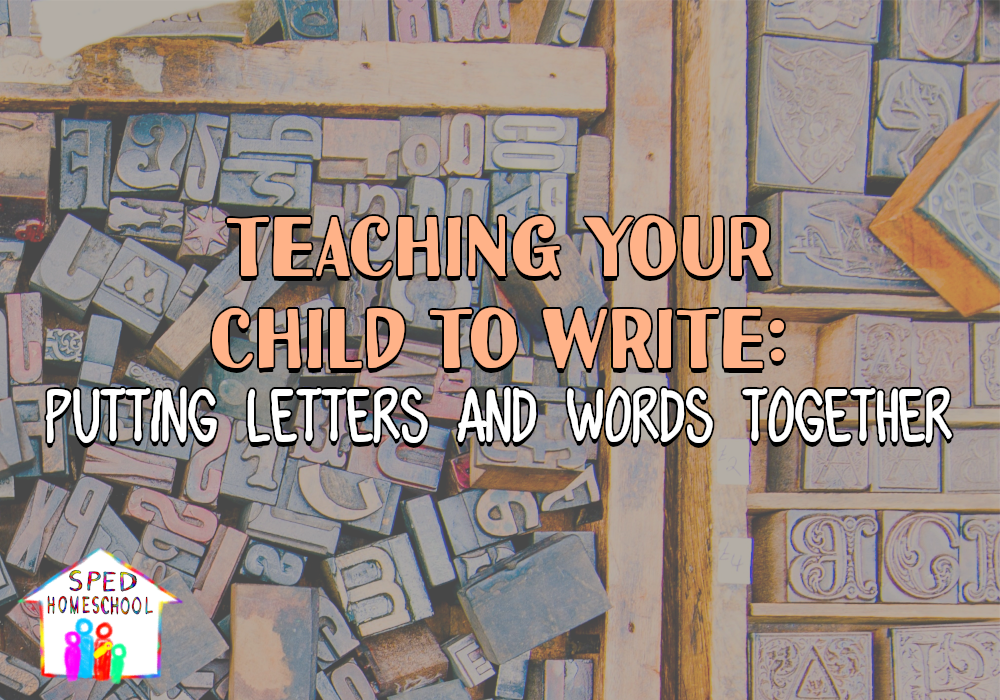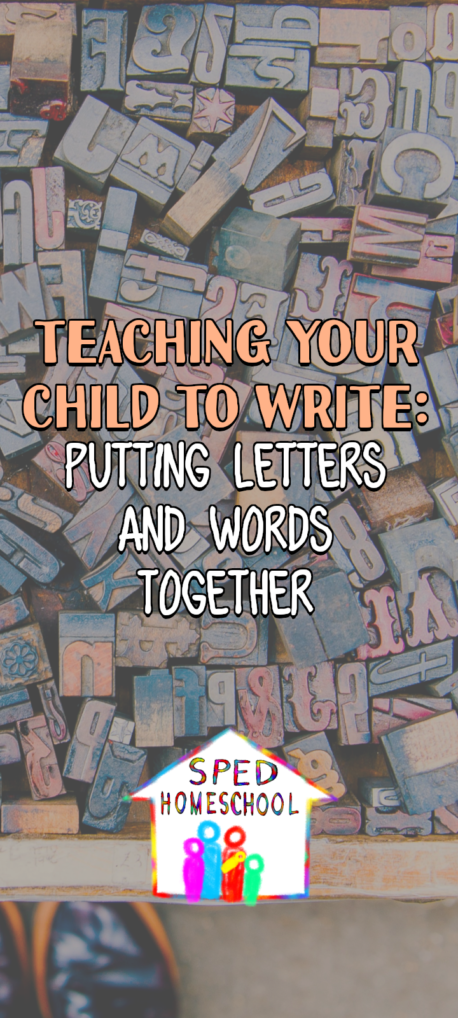
Now that your learner has worked through fine motor skill problems and can write letters, it is time to put it all together!
Usually when a child starts to learn to write, the letters are big and sloppy. That is totally normal! Once your child becomes more familiar with writing and has more control, then it is time to work on sizing, alignment, and spacing.
Sizing:
Sizing refers to how big the letters are by themselves and in relation to the page. A lot of kids start by making their letters as big as they possibly can on a given sheet of paper. Teaching them to write smaller yet big enough to be legible can sometimes be a challenge. But there are creative ways to encourage proper sizing.
First, take a partial sheet of paper and cut out a box that is roughly the size you want their letters to be. Then, place that on top of the paper they are writing on. The guide will help them to properly size their letters until they can do it on their own. You can also draw boxes directly on the paper for them to write inside. Special handwriting paper with raised lines can give them tactile input for the limits they should stay within, or you can also create these lines with puffy paint or wikki stix.
Alignment:
Alignment refers to how the letters are positioned on the paper in relation to the letters around them. Basically, is your child writing on a straight line, or is that sentence wiggling all over the paper?
Different letters have different positions. For instance, the letter “t” is a tall letter, letter “a” is a middle letter, and letter “p” is a bottom letter. This can be a difficult concept to grasp. To help your child understand, you can play a game. Hold up a letter on a flashcard (or just say it if they don’t need the visual prompt) and have them either raise their hands above their heads, cross their arms, or bend down to touch their toes depending on the alignment of the letter.
To help them when they are writing, kids need to be aware of where the baseline is for the words. We write on lined paper, which helps us keep our words straight, but your learner may need more help. You can emphasize that baseline with a highlighter or colored marker to help it stand out. You can also provide a tactile cue by raising the baseline with puffy paint or a wikki stix so they are aware when they are dipping below it or not. Though this can make writing “bottom” letters more difficult, it can help at the beginning when establishing what a baseline is.
Spacing:
Finally, spacing refers to how far apart the letters are in a word, and how far apart the words are in a sentence.
One helpful metaphor that I was taught, was “Spaghetti and Meatballs.” Letters should have a small space between them (like an uncooked spaghetti noodle), and words should have a bigger space between them (like a meatball). You can actually draw these lines and circles to reinforce the concept, but kids generally catch on pretty quickly.
There are many other visual cues you can use to help them with their spacing. Using things like a popsicle stick, stickers, manipulatives, or even their own fingers, can help them keep their spacing consistent. Decorating their popsicle sticks in a way that is appealing to them can also help keep kids engaged in the task.
To add an auditory cue, read their writing out loud to them to help them recognize the purpose of spacing. If words are squished together, then read them really fast and jumbled up. By pausing at the spaces and jumbling the words when spaces are missing, you can help your child to hear the importance of spacing in their writing.
For more ideas, here are some Pinterest boards to help you!
SPED Homeschool Handwriting Board
Growing as They Grow Pinterest Board
If you need to catch up, here are links to the previous posts in this series on teaching your child to write:
Pre-Writing Pointers
3 Stages of Forming Letters
Did you benefit from this article?
Would you consider a small donation to support the ongoing work of SPED Homeschool?
Click Here to Donate Today

